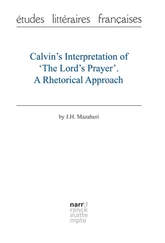Helge Fauskanger - J.R.R. Tolkien’s Lord’s prayer and Hail Mary in Quenya - Syntactical and Etymological Analysis
Здесь есть возможность читать онлайн «Helge Fauskanger - J.R.R. Tolkien’s Lord’s prayer and Hail Mary in Quenya - Syntactical and Etymological Analysis» весь текст электронной книги совершенно бесплатно (целиком полную версию без сокращений). В некоторых случаях можно слушать аудио, скачать через торрент в формате fb2 и присутствует краткое содержание. Жанр: Языкознание, на английском языке. Описание произведения, (предисловие) а так же отзывы посетителей доступны на портале библиотеки ЛибКат.
- Название:J.R.R. Tolkien’s Lord’s prayer and Hail Mary in Quenya: Syntactical and Etymological Analysis
- Автор:
- Жанр:
- Год:неизвестен
- ISBN:нет данных
- Рейтинг книги:5 / 5. Голосов: 1
-
Избранное:Добавить в избранное
- Отзывы:
-
Ваша оценка:
- 100
- 1
- 2
- 3
- 4
- 5
J.R.R. Tolkien’s Lord’s prayer and Hail Mary in Quenya: Syntactical and Etymological Analysis: краткое содержание, описание и аннотация
Предлагаем к чтению аннотацию, описание, краткое содержание или предисловие (зависит от того, что написал сам автор книги «J.R.R. Tolkien’s Lord’s prayer and Hail Mary in Quenya: Syntactical and Etymological Analysis»). Если вы не нашли необходимую информацию о книге — напишите в комментариях, мы постараемся отыскать её.
J.R.R. Tolkien’s Lord’s prayer and Hail Mary in Quenya: Syntactical and Etymological Analysis — читать онлайн бесплатно полную книгу (весь текст) целиком
Ниже представлен текст книги, разбитый по страницам. Система сохранения места последней прочитанной страницы, позволяет с удобством читать онлайн бесплатно книгу «J.R.R. Tolkien’s Lord’s prayer and Hail Mary in Quenya: Syntactical and Etymological Analysis», без необходимости каждый раз заново искать на чём Вы остановились. Поставьте закладку, и сможете в любой момент перейти на страницу, на которой закончили чтение.
Интервал:
Закладка:
The word naseems to be an optative particle (that is, a particle signaling that the sentence it occurs in should be taken as a wish rather than a declarative statement), aire"holy" (cf. aire María for "holy Mary" in the Hail Mary text), esselya"thy name" (sc. esse "name" + - lya "thy"). The whole sentence could be interpreted *"be holy thy name" with na as the imperative "be!" (LR:374 lists nâ 2- as the stem of the verb "to be" in Quenya), and perhaps this was indeed the construction the early Eldar originally intended, but if this is the case, na later evolved beyond being a mere imperative "be!" In light of the two next examples (see below), I think that in terms of synchronic syntax, it is probably best to interpret aire esselya as a nominal sentence "holy [is] thy name" (we will see several more examples of such sentences in this text), this declarative sentence then being transformed into a wish or a prayer by supplying the particle na : "May your name [be] holy."
aranielya na tuluva ·
thy kingdom come,
aranielya"thy kingdom", sc. # aranie "kingdom" + - lya "thy", naoptative particle denoting a wish, tuluva"shall come", verb tul - "come" + the future-tense ending - uva . Stylistic matters aside, the Quenya text reads literally something like "thy kingdom, wish-that [it] will come". Unlike the standard English text of the prayer, that simply expresses a wish that the kingdom may come without touching on time at all, the Quenya version makes it clear that the coming of the Kingdom of God is a future event – as indicated by the future-tense form tuluva . (Contrast the aorist tense employed in the translation of "thy will be done" below; this is not a prayer regarding a singular future event, but a prayer that the will of God always be done, irrespective of time.)
na care indómelya cemende tambe Erumande :
thy will be done, on earth as [it is] in heaven
nawishing-particle, care"does", aorist verb (with no explicit subject!), indólmelya"your will" (# indóme "will" + - lya "thy"), cemende"(as?) on earth". This is a hitherto unknown case or adverbial form. It could have much the same function as the well-known locative in - sse (that also occurs in the text before us, in the word lúmesse below). The basic word is cemen "earth", so the ending could be #- de (which form it could only have following words ending in - l , - r or as here - n ; otherwise impossible consonant clusters would arise – or, if this suffix were added to words ending in a vowel, an equally impossible intervocalic d ). It may be that the ending is actually #- nde , reduced to #- de when added to a word in - n . It could also be a kind of "comparative" case, indicating that cemende is being compared to Erumande (see below). In earlier "Qenya", an ending - ndon meaning "like" appears; it is possible that - nde is a later incarnation of it (see the entry cemende in the Lexical Commentary below for further discussion) [7] In VT43, the ending - de is suggested to be an allomorph of the locative ending - sse , or its shorter version - se . Tolkien may seem to be toying with a system that has this ending appearing as - ze or - de following certain consonants, like - n and - l . This phonological development does not agree very well with the system he uses elsewhere, though: cemen + - se would be expected to yield cemesse rather than cemende .
. tambe"as", evidently used when comparing with something not close to the speaker; contrast sív' later in the text, apparently meaning "as" when comparing to something that is in the proximity of the speaker (see the Lexical Commentary for further discussion of both words). Erumande"(as?) in heaven", a most peculiar form apparently including Eru "God"; see Lexical commentary. It evidently incorporates the same "locative" or "comparative" ending as in cemende , and since the latter is known to correspond to the nominative form cemen , the nominative of Erumande could likewise be # Eruman . Yet since the ending may also be # -nde , another possible nominative may be # Eruma [8] VT43 takes it for granted that the simplex is Eruman .
.
This line suggests that Tolkien based his Quenya version of the prayer on the typical English wording rather than the Greek or Latin versions. In the Greek text of Matthew 6:10, the wording used is "as in heaven, so on earth" ( hôs en ouranôi kai epi gês ; cf. also Latin sicut in caelo et in terra ). The inversion "on earth as in heaven" is however usual in English versions (found already in one Old English translation: on eorthan swa swa on heofenum ), and Tolkien is seen to have carried it over into Quenya.
This line commences with the last attestation of the wishing-particle na in this text, and we can summarize the syntactical rules relating to it as follows: The particle is used to express a wish (or perhaps indeed prayer) about what happens (will happen) to an object, or what a subject does (will do). If the speaker wishes that a subject is to have or receive the qualities denoted by some adjective, the syntax is particle + adjective + subject ( na aire esselya , *"wish-that holy [is] thy name" = "hallowed be thy name"). If the speaker wishes that a subject is to do something, the syntax is subject + particle + finite verb in the appropriate tense: Aranielya na tuluva , *"thy kingdom, wish-that [it] will come". If the speaker wants to express what he wishes to be done to an object, the syntax is particle + finite verb + object: Na care indómelya , *"wish-that [one] does thy will". The latter is the most remarkable construction; the subject position is simply left empty. One is reminded of the Adûnaic system, whereby the passive is rendered by "subject in accusative" (SD:439 – in other words, the "passive" construction basically consists of simply omitting the real subject, denoting the agent, from the sentence!) It may be that Quenya regularly employs "subject-less" verbs where English would have an "impersonal" subject like one : hence care = *"one does". (It may be noted that Tolkien sometimes slipped in singular third person pronouns when translating such aorist verbs, e.g. take "he fastens" in LR:389 s.v. tak-, though no explicit pronominal element "he" is present. Perhaps this could also be taken as – or is properly – an impersonal verb: *"one fastens". If so, na care indómelya is not really a subject-less construction: rather a somewhat ethereal impersonal subject is inherent in this very form of the verb, though it is only perceived when it is not "overridden" by another, explicit subject.) In Quenya, it would probably be permissible to slip in an explicit subject in the normal position and say (for instance) * na ilquen care indómelya , "wish that everyone does thy will". This would involve nothing more dramatic than merging the attested patterns subject + particle + finite verb and particle + finite verb + object (into subject + particle + finite verb + object) [9] VT43 does not consider the possibility of a subject-less construction; na care indómelya is apparently taken as a kind of imperative: "Do thy [own!] will!" rather than "let thy will be done".
.
Интервал:
Закладка:
Похожие книги на «J.R.R. Tolkien’s Lord’s prayer and Hail Mary in Quenya: Syntactical and Etymological Analysis»
Представляем Вашему вниманию похожие книги на «J.R.R. Tolkien’s Lord’s prayer and Hail Mary in Quenya: Syntactical and Etymological Analysis» списком для выбора. Мы отобрали схожую по названию и смыслу литературу в надежде предоставить читателям больше вариантов отыскать новые, интересные, ещё непрочитанные произведения.
Обсуждение, отзывы о книге «J.R.R. Tolkien’s Lord’s prayer and Hail Mary in Quenya: Syntactical and Etymological Analysis» и просто собственные мнения читателей. Оставьте ваши комментарии, напишите, что Вы думаете о произведении, его смысле или главных героях. Укажите что конкретно понравилось, а что нет, и почему Вы так считаете.












